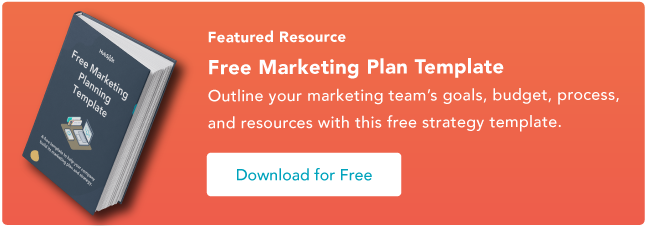Everything You Need to Know About Webinar Marketing
- February 26, 2024
- Knowledge Base
- 0 Comments

Webinars are a great way to teach customers about your offering or share helpful tips with your audience. They’re low-cost and generate engagement. Plus, they provide your sales team with leads from your signup form. Everybody wins — that is if people actually attend. Webinar marketing is essential to getting those numbers up and your mission out.
During my eight years in marketing, I learned several best practices for hosting a successful webinar. That includes how to build a marketing campaign that gets participants through the digital doors. We‘ll explore best practices below. Then, we’ll create a mock campaign to put these tips into practice.
Let’s get started.
Table of Contents
Benefits of Webinar Marketing
There are lots of ways to amplify your brand’s voice, but webinars provide you with a unique opportunity. You can tap into knowledge straight from the specialists. That includes internal experts already at your company or respected thought leaders in your industry. In fact, the Content Marketing Institute applauds webinars as one effective way to broadcast your message.
Below, HubSpot’s Kaitlin Milliken explores some benefits she’s seen from her time working on webinars. Milliken worked on webinars for three years in a previous role, booking guests, marketing the webcasts, acting as a host, and evaluating performance data.
Lead Generation
In her role at a business news outlet, Milliken worked with the publication’s partners. In her experience, she found that sponsors were most interested in partnering for webinars.
“Why? Well, lead generation made all the difference,” Milliken, a senior program manager, recalls. “People had to register for the webinar, so our sponsors knew that these were business leaders struggling with issues their consultancy could actually solve.”
Milliken says that lead generation was much more effective in finding likely customers than a generic social media post or mention in a newsletter. Beyond that, both the sponsors’ brands and the publication reached new audiences, thanks to co-marketing efforts.
If your company specializes in multiple subject areas, you can host webinars on each topic. This generates different lists of leads that you can pair with the right representative for outreach.
Great Data Generation
In webinars, leads aren’t the only data that matters. Your webinars can help evaluate how engaged your audience is, what topics matter to them most, and which thought leaders struck up the most engagement.
Milliken has hosted dozens of webinars, including 60 over the course of the COVID-19 lockdowns. She says attendance varied based on the specific topic the show would cover.
“I hosted lots of webinars during the early pandemic. We found that sessions focused on remote work, managing ambiguity, and innovation efforts that improved efficiency performed well,” she says. “Webinars related to startups were less successful.”
Milliken says that attendance data from webinars reflected a larger trend in the business world: More companies were focused on supporting core businesses. The startup ecosystem was less of a priority.
Beyond that, Milliken says her team conducted polls of participants. This let her get a pulse check on how companies were responding to uncertainty and if they found the webinar helpful.
Cost Effective
Concerned about expenses? Webinars are a budget-friendly solution. No matter where you or your attendees are across the globe, webinars bring you together without the travel costs. Plus, you can chat with experts in your field, no matter where they’re located. No need to pay for a flight.
“Big conferences require hotel stays, catering, and transportation,” Milliken says. “While in-person gathering have their place, webinars are a lot lower-lift and way less costly.”
Repurposing Content
Depending on the subject or type of webinar, you can always transform your recording into more content down the road. Your guests may even share the recording on social for an extra marketing push once the meeting ends.
In her previous role, Milliken says, she wrote up an article based on the content of the webinar. She also included important slides and a recording of the full session in the post. She notes that this helped keep the editorial calendar full and share valuable insights with people who couldn’t make the initial recording. You can see a sample below.
What Makes a Webinar Campaign Successful?
Now that you know how webcasts can bolster your brand, let’s focus on how you can run a webinar successfully. You can see best practices below.
Craft irresistible content.
Of marketers, 95% see webinars as important to their marketing strategy. However, the content needs to align with your audience to garner attendees. Before you even set a date for your webinar, you need to find out what matters most to your audience.
“Every year, we polled our publication’s readers to see what was on their mind,” Milliken says of her previous role. “We could then see what webinar topics were likely to resonate. We used that data internally and shared it with partners so they could craft successful revenue too.”
Your team likely already has this data. HubSpot’s Content & Media Strategy Report shows that 64% of marketers conduct research to understand what types of content their audience is most interested in. Beyond that, 59% said these audits of current and past media strategies to inform future tactics.
Once you have a subject decided, you’ll want to build a compelling slide deck or have a short list of super-star thought leaders to interview. Slides with helpful, fresh data or insights for people your audience looks up to can help pique interest.
Create your landing page.
As soon as you have a date set for your webinar, it’s time to start promotion. The first thing you’ll need to do is build a landing page. This will be the digital portal where you promote your webinar and the hub for people to sign up.
Let’s take a look at the landing page above. Note how it includes the following:
- A catchy headline. You’ll want your headline front and center on your page, incorporating search-worthy keywords where possible. Remember, your headline is only as good as your content, so pick a solid concept upfront.
- A description of the webinar. Your landing page will need a brief description of what your participants will learn. This is also the spot to mention any guests joining your presenter. This is another area to get that extra SEO juice.
- A lead generation form. At a minimum, you’ll need your participants’ names and email to send them updates. However, if you plan on doing sales outreach afterward, the person’s company name and title may also be helpful.
- Interesting imagery. All text pages lack visual variation. Be sure to include art that’s consistent with your branding.
According to GoToWebinar, 59% of registrants sign up for a webinar the week it’s scheduled. However, 41% sign up before that window. Make sure you give yourself at least one month to promote your landing page.
Leverage email newsletters and social media.
Once you have a landing page put together, it’s time for promotion. Simply putting a form on your website won’t be enough to generate an audience. According to GoToWebinar, email is the top channel for promoting these online gatherings. Of its 250,000 survey respondents, 57% cited email as their top promotional channel.
Let’s take a look at this email about an upcoming webinar for the learning management platform TalentLMS.
This email covers all of the key points potential audience members should know:
- The topic of the webinar is clearly stated in bold.
- The email gives three key takeaways attendees can expect to learn from the session.
- Speakers are clearly listed in the copy.
- There are two prominent CTAs for people to sign up.
You’ll want to send multiple emails in advance of your webinar. That includes a last-minute signup push on the day of your event. Around 17% of people register for webinars on the day they occur. You don’t want to miss out on the stragglers.
Social media can be another helpful tool to promote your webinar.
“When I worked on webinar content, I made custom graphics with varied text to promote the topic of our discussion,” Milliken says. “You need to make sure to cover important keywords, have striking visuals, and — if you have speakers — include an identifiable picture of them.”
This webinar post for a conversation about 5G hits all of these key points. You can clearly see what the topic of discussion is and who’s participating. Plus, the webinar follows brand guidelines and colors.
Co-promote with your guests.
Including guests in your webinar is a great way to garner interest in your session. Oftentimes, especially if your expert has influence, you can grow your audience to include people who are new to your brand.
“I hosted a webinar session once with Steve Blank, a thought leader in the tech space. It was one of our most popular sessions. People who follow his work joined our webinar, even if they had never heard of our publication,” Milliken says.
Be sure to integrate your guests from the start. If you can get their input on your topic and slides, they can point out areas where they could share their expertise. This also increases their engagement and investment in the webinar.
From there, you can share assets for them to promote on their distribution channels. They can include your webinar in their email newsletter and on their social media pages. This will help you reach the widest audience possible.
Delivering a webinar that captivates.
Yes, delivering a great webinar is a part of your marketing strategy. You need to lead with your best and ensure that attendees are impressed by what you have to offer. Tech issues, disorganization, and a lack of helpful content could even hurt your brand.
Follow these quick tips to run a smooth webinar:
- Run a rehearsal. This is an opportunity for your presenters to test their technology and meet with their guests. You don’t have to do a full run-through, but this is a great opportunity to address any technical questions.
- Have an outline. Reading a script word for word sounds stiff. Delivering a presentation completely off the cuff only works if you’re a master presenter. Split the difference and have an outline with bullet points you want to cover.
- Have your presenters show up early. Five minutes before the show starts, you want to make sure everyone is present.
- Have a backup plan. You can’t prepare for everything. Your internet might cut out. Your guest could get sick. Make sure you have backup ways to dial in and backup plans to fill time.
- Make time for Q&A. A great presentation sparks more thinking and thoughtful questions. Try to leave at least five minutes for Q&A to engage with your audience. You should allot even more time if you have a superstar guest.
Remember, the people who love webinars will want to attend future sessions. Use their first webinar with you as a way to hook them for more.
Promote your recaps (and promote your next webinar).
As mentioned above, consider recapping your webinar. If your session has helpful information, you can post it on your website along with a recap. This is not only a way to show people what they missed, but it can also increase interest in your future sessions.
Webinar Marketing Best Practices in Action
In the grand theater of webinars, your brand isn‘t just another act — it’s the headline show. With sessions led by these mavens of marketing, you’re not merely attending; you’re part of a marketing revolution that leaves your audience cheering for an encore.
Neil Patel Digital
Step into a session with Neil Patel, where the digital marketing wisdom flows as smoothly as your favorite playlist. Each piece of advice is a hit single, making SEO and content marketing the headline acts that leave you amped up and ready to rock the digital world.
The webinar below covers top marketing trends for the year. I love how the session structures the topic into a numbered list. This helps increase interest. I’ve noticed that webinars with a number in the title tend to perform better than those that don’t.
Beyond that, each speaker’s name is followed by a short bio. This helps audience members know exactly who they’ll be learning from.
Content Marketing Institute
Now, imagine joining the Content Marketing Institute’s webinars. It‘s like being at the coolest industry conference, where content marketing gurus drop knowledge bombs that resonate with every marketer’s core. It’s an all-access pass to the VIP lounge of content strategies and storytelling finesse.
Content Marketing Institute offers a great example of leveraging past webinar content. If there are no upcoming webinars, the page displays past sessions that viewers can watch on demand. Beyond that, the posts lay out how long the session is. Users will know from the get go if the content fits in their schedule.
Marketing Nation Online
Don’t miss out on Marketo’s “Marketing Nation Online” series either. They take the complex world of marketing automation and spin it into a narrative as compelling as the most gripping podcast series. Each webinar is a chapter that weaves the intricate tapestry of customer relations and engagement strategies.
I love how Marketo takes the series approach to webinars. That’s a great way to hook your audience so they tune in for the next installment.
Getting Started
Navigating the webinar waters takes a mix of guts, wit, and a bit of tech know-how. Every step, from dreaming up content that sticks to mastering the tech waltz, hammered home the power of paying attention and keeping the crowd locked in.
It’s a blend of good old storytelling, high-flying interactive moments, and a tech setup that’s solid as a rock. That’s the recipe for a webinar that doesn’t just talk the talk but truly sings and swings with the audience.
![Download Now: Free Marketing Plan Template [Get Your Copy]](https://no-cache.hubspot.com/cta/default/53/aacfe6c7-71e6-4f49-979f-76099062afa0.png)




